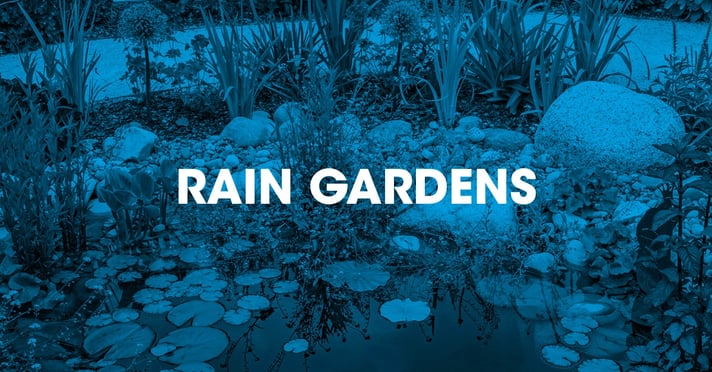What is a rain garden?
A rain garden is a small bio-retention systems that serves part of a single property storm water disposal system.
They are less engineered than a fully designed bio-retention system of a ‘Sustainable Drainage System’ (SuDS) across a development site.
Similar to other bio-retention systems they can be shallow landscaped depressions or raised component features, designed to manage rainwater runoff, treat rainwater through engineered soils and vegetation and provides a bio-diverse feature in a homeowner’s garden.
Rain gardens maybe integrated with engineered bio-retention or filtration systems across a development site but it is more likely they are standalone bio-retention systems with an overflow discharge into the surface water system.
They could also be used in combination with rainwater harvesting systems.
Rain Gardens whilst promoted as an environmentally designed water retaining filtration system require a positive drainage system and positioning to avoid impacting on the building foundations.
Download a PDF copy of this guidance here.
Rain garden design
A sunken rain garden typically has:
- A simple inflow where rainwater enters the rain garden
- Vegetation chosen to assist in the performance of the system
- A 200 – 500mm engineered and graded soil layer or layers
- Infiltration into the subsoil (where appropriate)
- An overflow / outlet provision
Design proposals must demonstrate:
- The ability to deal correctly with everyday rainwater discharge from the building
- Adequacy to manage with extreme rainfall and runoff to receiving watercourses or outfalls
- Be correctly positioned in relation to the local topography, ground conditions and avoid potential damage to adjacent buildings.
- That a suitable maintenance plan is in place* to ensure the rain garden will continue to perform their drainage function effectively
*The Developer must undertake to provide at handover, any appropriate related details to owners of a rain garden for them to understand their responsibilities to maintain the effectiveness of a bio-retention system on frequent and not greater than an annual basis.
Warranty stance
As with all surface water ground filtration systems, the location of the water garden in relation to a building must avoid the potential for foundation movement to any building foundations.
Therefore for warranty provision:
- A rain garden must not be located any closer than 5m to a building and,
- If constructed on a sloping site, they must be positioned ‘downhill’ of the adjacent building.
- Any designs received where a rain garden is located nearer than 5.0m will require a detailed hydraulic design proposal by a SuDs qualified drainage engineer to demonstrate the rain garden will not pose a risk to the building foundations.
Guidance given in The SuDs Manual (CIRIA 753) Parts B; Design Philosophy and Part E: Supporting Guidance may be followed and a detailed proposal by the drainage engineer must be submitted for appraisal by our Warranty surveyor at least 8 weeks before drainage works commences on site.
Evidence of a maintenance plan in place, post completion will be required.
In situations where a rain garden is positioned on a building structure, additional guidance for waterproofing the structure is provided in the Roof Section of the Technical Manual - Green roofs and Podium Decks subsections. Further guidance for effective waterproofing of structures can also be found in BS8102.

